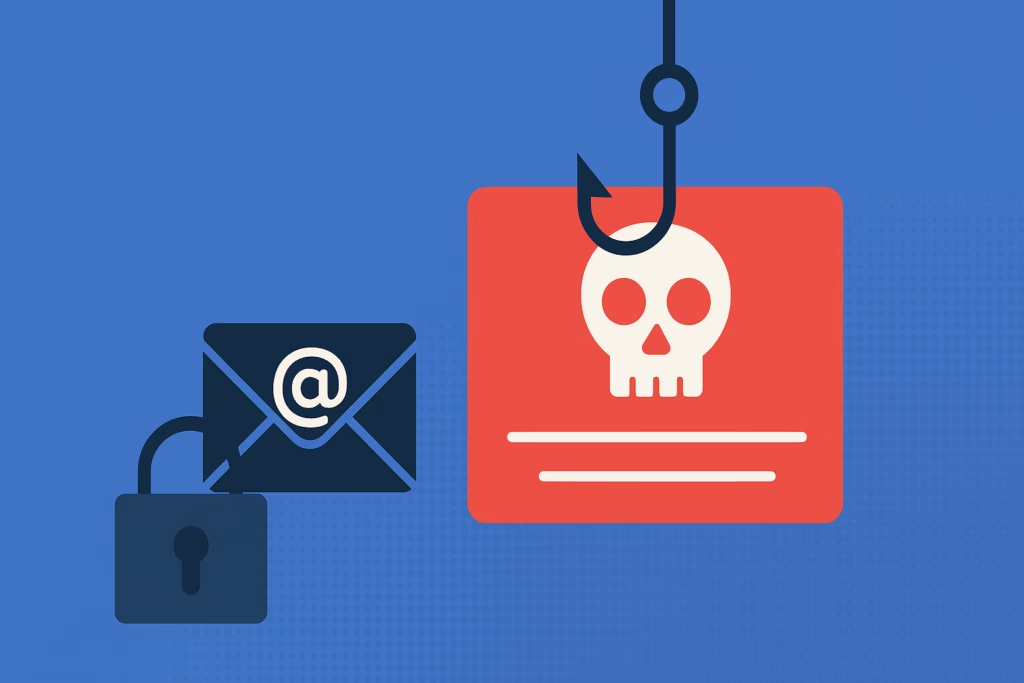
Cybercriminals have evolved far beyond sending generic “Nigerian prince” emails to millions of users. Today’s most dangerous threats come in the form of spear phishing attacks – highly targeted, personalized campaigns that specifically target individuals or organizations. Unlike traditional phishing attempts that cast a wide net, spear phishing represents a precision strike designed to bypass security measures and exploit human psychology.
With FBI reports indicating that business email compromise attacks resulted in over $2.7 billion in losses in 2022, understanding spear phishing has become critical for both individuals and organizations. These targeted attacks succeed because they leverage detailed reconnaissance and social engineering to create convincing, personalized messages that appear to come from trusted sources.
What is Spear Phishing? A Comprehensive Definition
Spear phishing definition encompasses a sophisticated form of cyberattack where criminals research and target specific individuals or organizations with customized fraudulent communications. Unlike broad phishing campaigns that might target thousands of random email addresses, spear phishing attacks focus on carefully selected victims using personalized information to increase the likelihood of success.
The key distinguishing factors of spear phishing include:
- Targeted approach: Attackers research specific individuals or organizations
- Personalization: Messages contain personal details, company information, or industry-specific language
- Trusted sources: Communications appear to come from colleagues, vendors, or legitimate organizations
- Specific objectives: Focused on particular goals like accessing sensitive data or financial accounts
This targeted approach makes spear phishing significantly more dangerous than traditional phishing attempts. While generic phishing emails might have a success rate of less than 1%, spear phishing attacks can achieve success rates of 30% or higher due to their personalized nature.
How Spear Phishing Attacks Work
Understanding the mechanics of a spear phishing attack reveals why these targeted campaigns are so effective. The process typically follows a systematic approach that combines reconnaissance, social engineering, and technical exploitation.
Phase 1: Reconnaissance and Target Selection
Cybercriminals begin by identifying valuable targets and gathering intelligence about their victims. This research phase involves:
- Social media analysis: Reviewing LinkedIn, Facebook, Twitter, and other platforms for personal and professional information
- Company research: Studying organizational charts, recent news, vendor relationships, and business partnerships
- Email harvesting: Collecting email addresses from websites, directories, and data breaches
- Relationship mapping: Identifying key contacts, supervisors, and trusted communication partners
This reconnaissance phase can take weeks or months, with attackers building comprehensive profiles of their targets. They look for information that can be used to create convincing pretexts, such as recent business trips, project deadlines, or personal interests.
Phase 2: Message Crafting and Delivery
Armed with detailed intelligence, attackers create highly personalized messages that appear legitimate. These communications often:
- Reference specific projects, colleagues, or business relationships
- Use official company logos, signatures, and formatting
- Create urgency or authority to pressure quick action
- Include malicious attachments or links to credential harvesting sites
The messages are typically delivered via email, but sophisticated campaigns might also use SMS, voice calls, or even physical mail to increase credibility.
Phase 3: Exploitation and Persistence
Once a victim interacts with the malicious content, attackers move quickly to exploit their access. This might involve:
- Installing malware or remote access tools
- Harvesting credentials from fake login pages
- Accessing financial accounts or sensitive data
- Establishing persistent access for future attacks
Real-World Examples of Spear Phishing Attacks
Examining actual spear phishing incidents helps illustrate the sophistication and impact of these targeted attacks. Several high-profile cases demonstrate how even security-conscious organizations can fall victim to well-crafted campaigns.
The Target Corporation Breach (2013)
One of the most significant spear phishing attacks targeted a small HVAC contractor that worked with Target Corporation. Attackers sent personalized emails to employees of Fazio Mechanical Services, ultimately gaining access to credentials that allowed them to infiltrate Target’s network. The breach resulted in the theft of 40 million credit card numbers and cost Target over $200 million in damages.
The Democratic National Committee Attack (2016)
Russian operatives used spear phishing emails disguised as security warnings from Google to target Democratic Party officials. The personalized messages convinced recipients to click on malicious links that harvested their Gmail credentials. This attack led to the theft and publication of thousands of sensitive emails, significantly impacting the 2016 election.
The Anthem Healthcare Breach (2015)
Healthcare giant Anthem fell victim to a spear phishing campaign that resulted in the theft of personal information from 78.8 million customers. Attackers used carefully crafted emails targeting specific employees, eventually gaining access to database servers containing names, social security numbers, and medical information.
Common Spear Phishing Tactics and Techniques
Cybercriminals employ various tactics to make their spear phishing attacks more convincing and effective. Understanding these techniques helps individuals and organizations better prepare their defenses.
Business Email Compromise (BEC)
BEC attacks involve impersonating executives or trusted business partners to request fraudulent wire transfers or sensitive information. These attacks often target finance departments with urgent requests that appear to come from company leadership.
Credential Harvesting
Attackers create fake login pages that perfectly mimic legitimate services like Office 365, Google Workspace, or banking portals. Victims who attempt to log in unknowingly provide their credentials to cybercriminals.
Malware Distribution
Spear phishing emails often contain malicious attachments disguised as legitimate documents. These might include:
- Microsoft Office documents with malicious macros
- PDF files containing exploits
- ZIP archives with executable files
- Fake software updates or installers
Social Engineering Manipulation
Attackers leverage psychological tactics to increase compliance, including:
- Authority: Impersonating executives or government officials
- Urgency: Creating time pressure to bypass normal security protocols
- Familiarity: Referencing personal information or shared experiences
- Reciprocity: Offering something valuable in exchange for information
How to Identify Spear Phishing Attempts
Despite their sophisticated nature, spear phishing attacks often contain telltale signs that alert recipients can identify. Developing awareness of these indicators significantly reduces the risk of falling victim to targeted attacks.
Email Analysis Techniques
Carefully examining suspicious emails can reveal important clues:
- Sender verification: Check the actual email address, not just the display name
- Domain inspection: Look for slight misspellings in legitimate domain names
- Link analysis: Hover over links to preview their actual destinations
- Attachment scrutiny: Be cautious of unexpected attachments, especially executables
Content Red Flags
Even personalized spear phishing messages often contain warning signs:
- Urgent requests for sensitive information or financial transactions
- Unusual language or grammar that doesn’t match the supposed sender
- Requests to bypass normal security procedures
- Generic greetings despite supposedly knowing the recipient personally
Context Verification
When in doubt, verify suspicious requests through alternative communication channels:
- Call the supposed sender using a known phone number
- Ask questions that only the real sender would know
- Check with IT security before clicking links or downloading attachments
- Verify urgent requests through official company procedures
Protecting Against Spear Phishing Attacks
Defending against spear phishing requires a multi-layered approach that combines technical controls, security awareness training, and organizational policies. No single solution can provide complete protection, but comprehensive strategies significantly reduce risk.
Technical Security Controls
Organizations should implement robust technical defenses:
- Advanced email filtering: Deploy solutions that analyze email content, sender reputation, and attachment behavior
- Domain authentication: Implement SPF, DKIM, and DMARC records to prevent email spoofing
- Multi-factor authentication: Require additional verification for sensitive systems and accounts
- Network segmentation: Limit access to critical systems and data
Security Awareness Training
Human-focused defenses are equally important:
- Regular training sessions: Educate employees about current spear phishing tactics
- Simulated phishing exercises: Test employee awareness with controlled campaigns
- Reporting procedures: Establish clear processes for reporting suspicious emails
- Incident response training: Prepare teams to respond quickly to successful attacks
Organizational Policies
Clear policies help employees make better security decisions:
- Verification requirements for financial transactions
- Approval processes for sensitive information requests
- Guidelines for sharing information on social media
- Procedures for accessing company systems remotely
The Role of Advanced Email Security Solutions
Traditional email security solutions often struggle with spear phishing attacks because these targeted campaigns are specifically designed to bypass standard filters. Advanced email security platforms use artificial intelligence and machine learning to detect subtle indicators of spear phishing attempts.
Modern email security solutions like PhishDef employ sophisticated analysis techniques that examine email content, sender behavior, and contextual factors to identify targeted attacks. These platforms can detect anomalies in communication patterns, identify suspicious links and attachments, and provide real-time protection against evolving threats.
Key capabilities of advanced email security include:
- Behavioral analysis to detect impersonation attempts
- Real-time URL analysis and sandboxing
- Integration with threat intelligence feeds
- Automated incident response and remediation
Key Takeaways for Spear Phishing Defense
Protecting against spear phishing requires understanding that these attacks succeed through careful research, personalization, and social engineering. Organizations and individuals must adopt comprehensive security strategies that address both technical and human factors.
Critical defense strategies include:
- Awareness: Understand how spear phishing attacks work and what they look like
- Verification: Always verify unexpected requests through alternative channels
- Technology: Implement advanced email security solutions and multi-factor authentication
- Training: Regularly educate employees about current threats and attack techniques
- Policies: Establish clear procedures for handling sensitive information and requests
Remember that spear phishing attacks are constantly evolving, with cybercriminals developing new techniques to bypass security measures. Staying informed about current threats and maintaining robust security practices is essential for protecting against these sophisticated targeted attacks.


